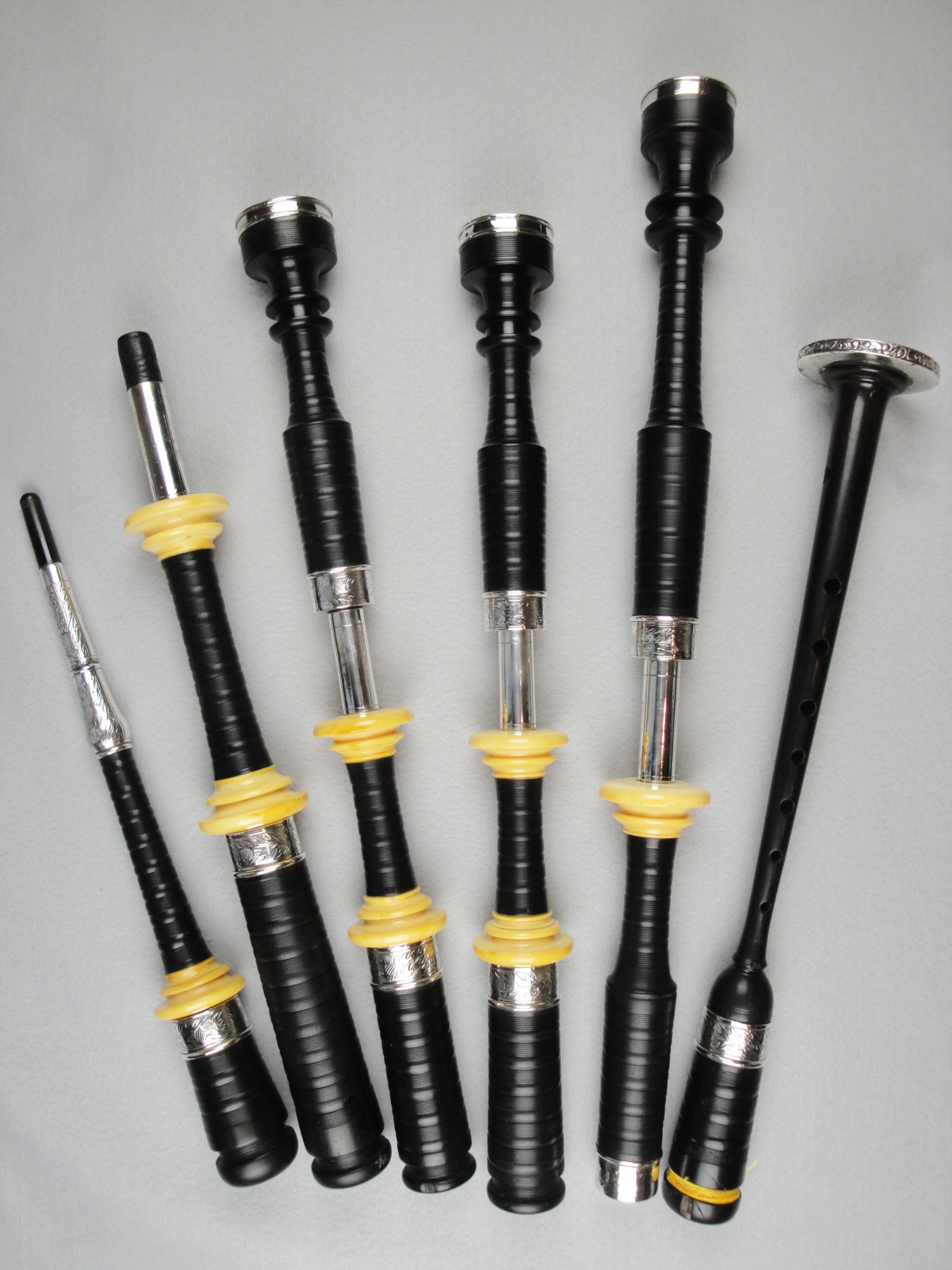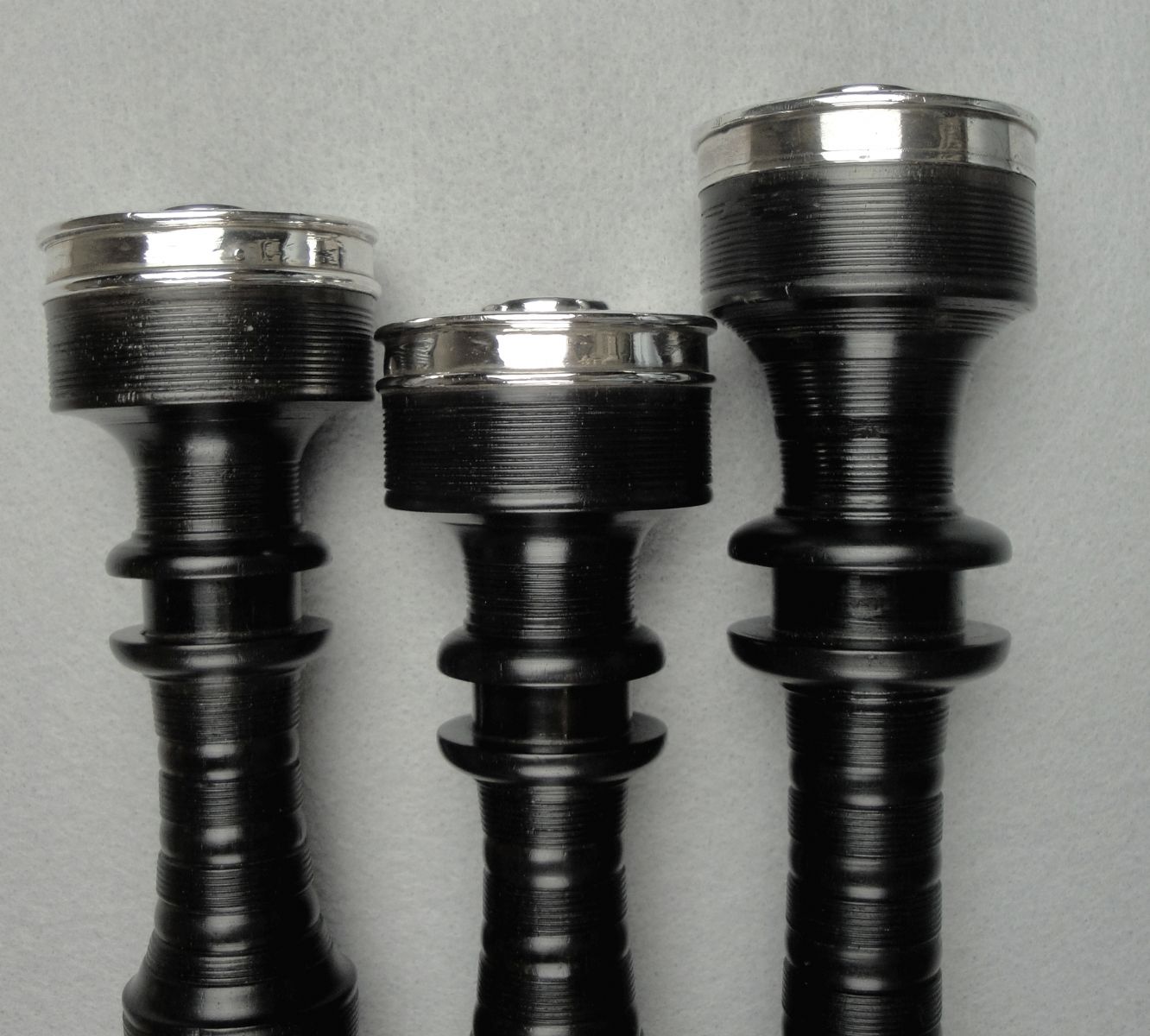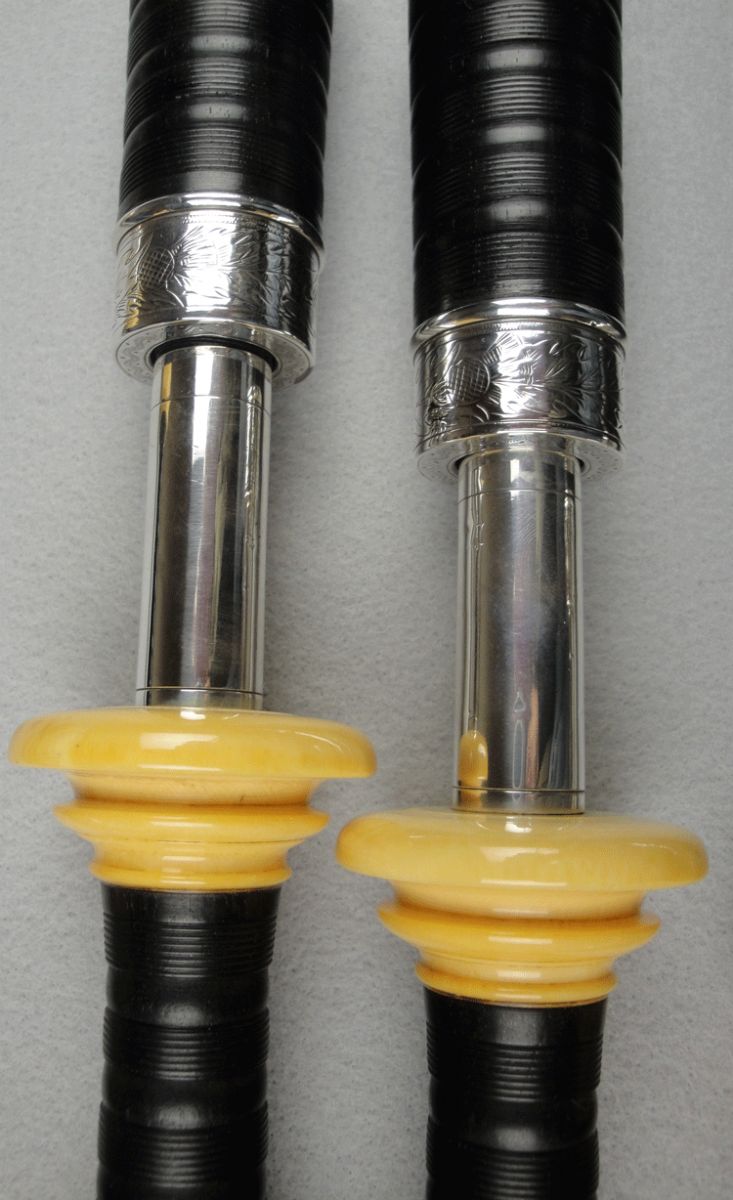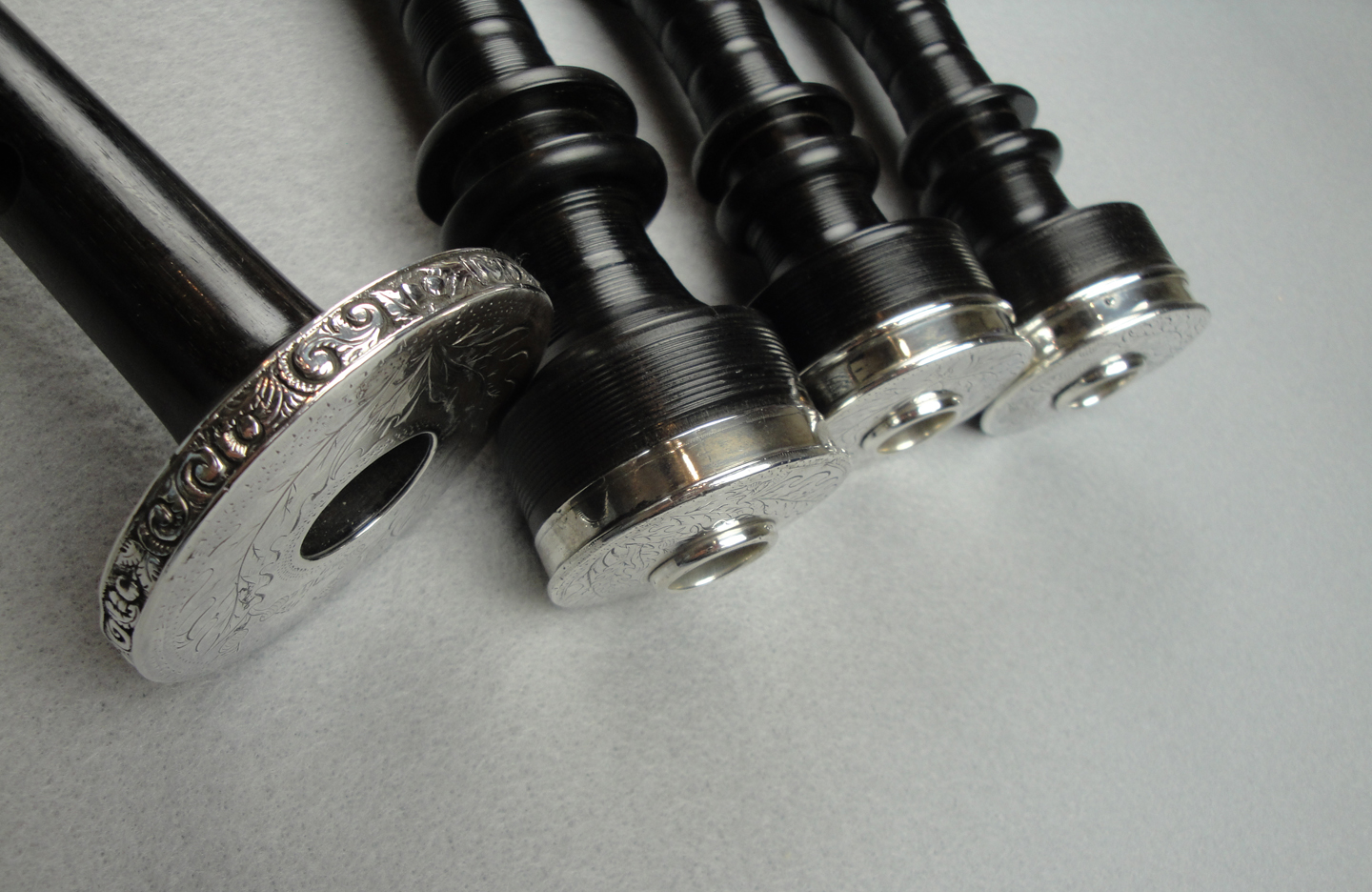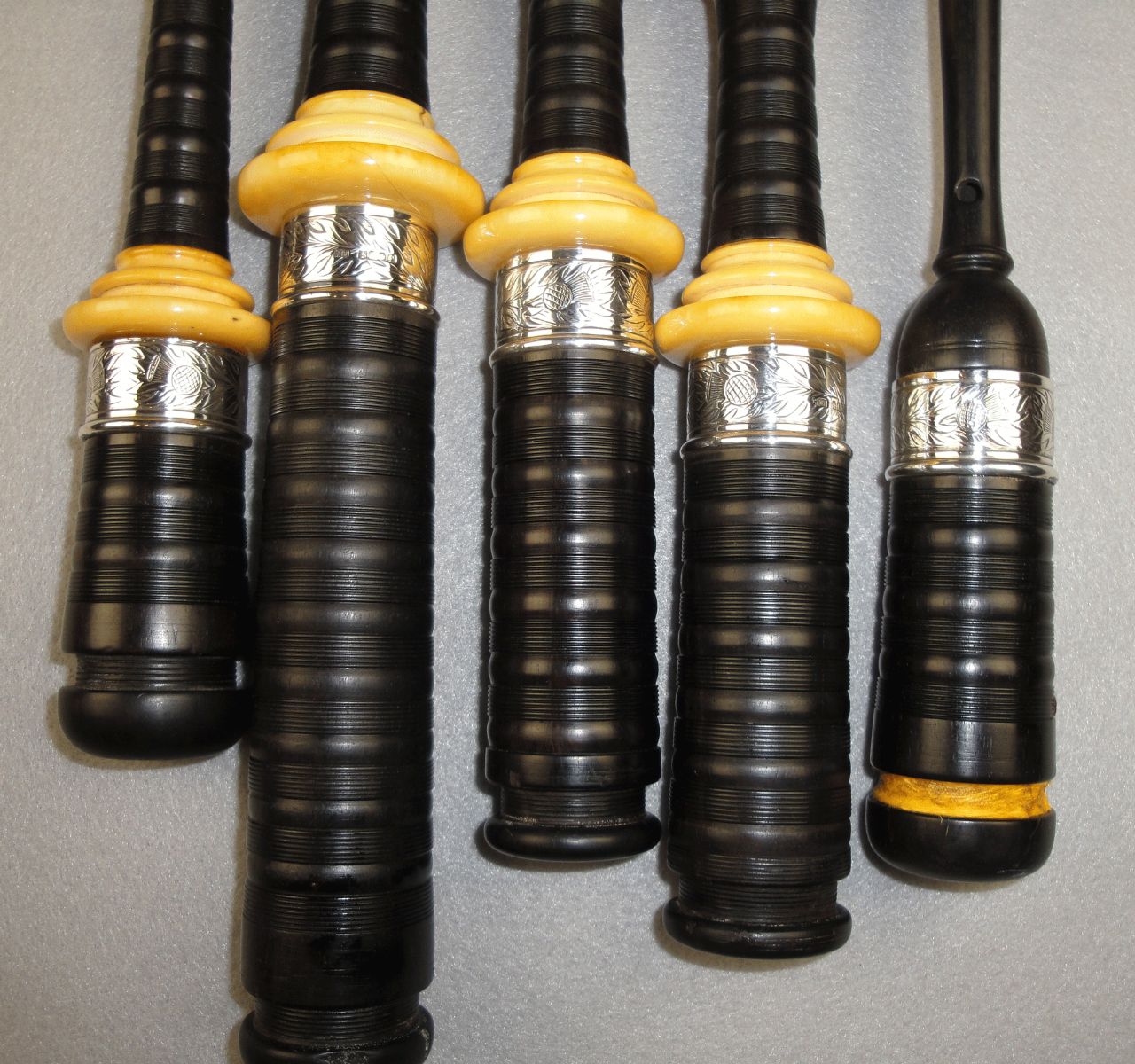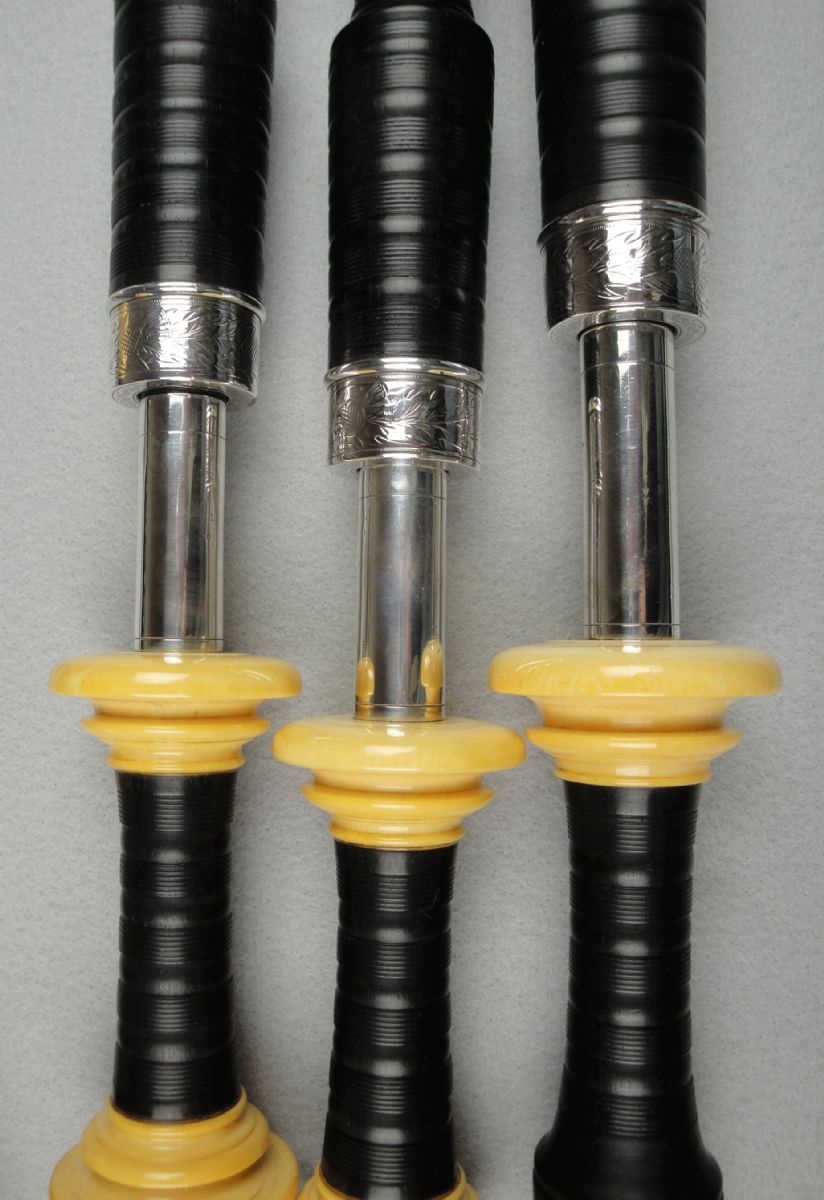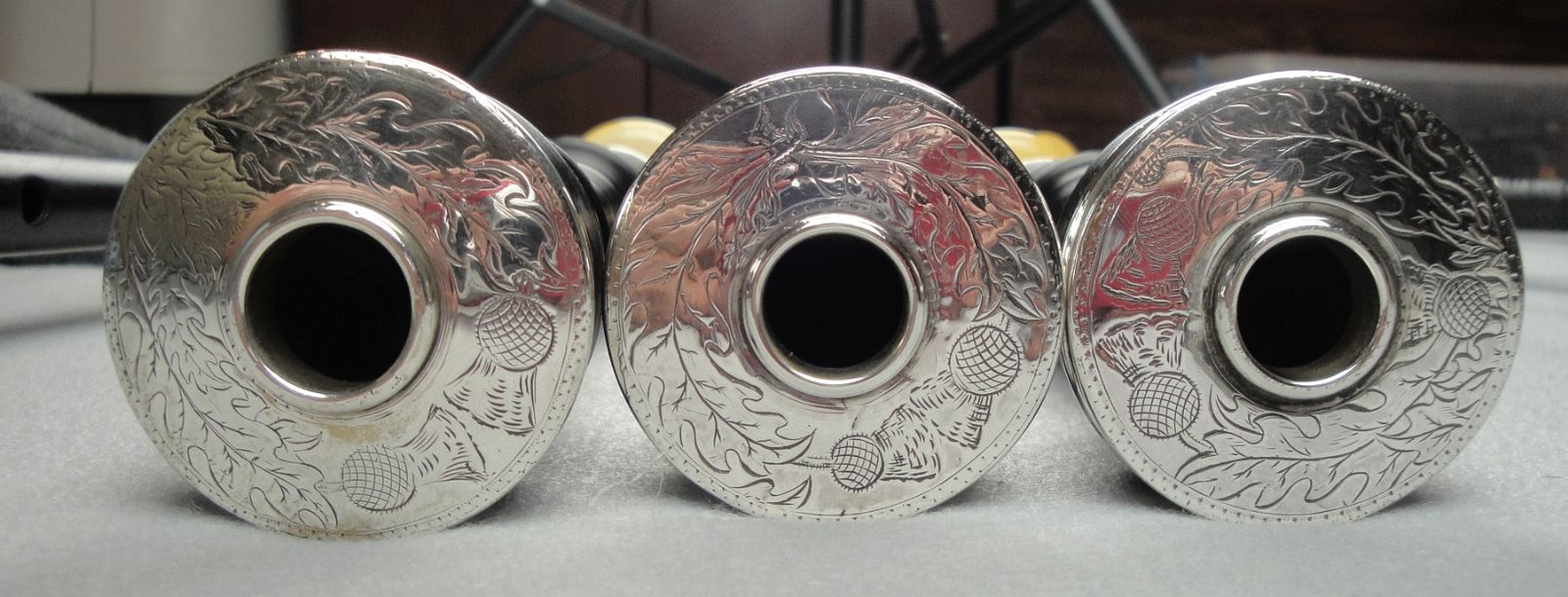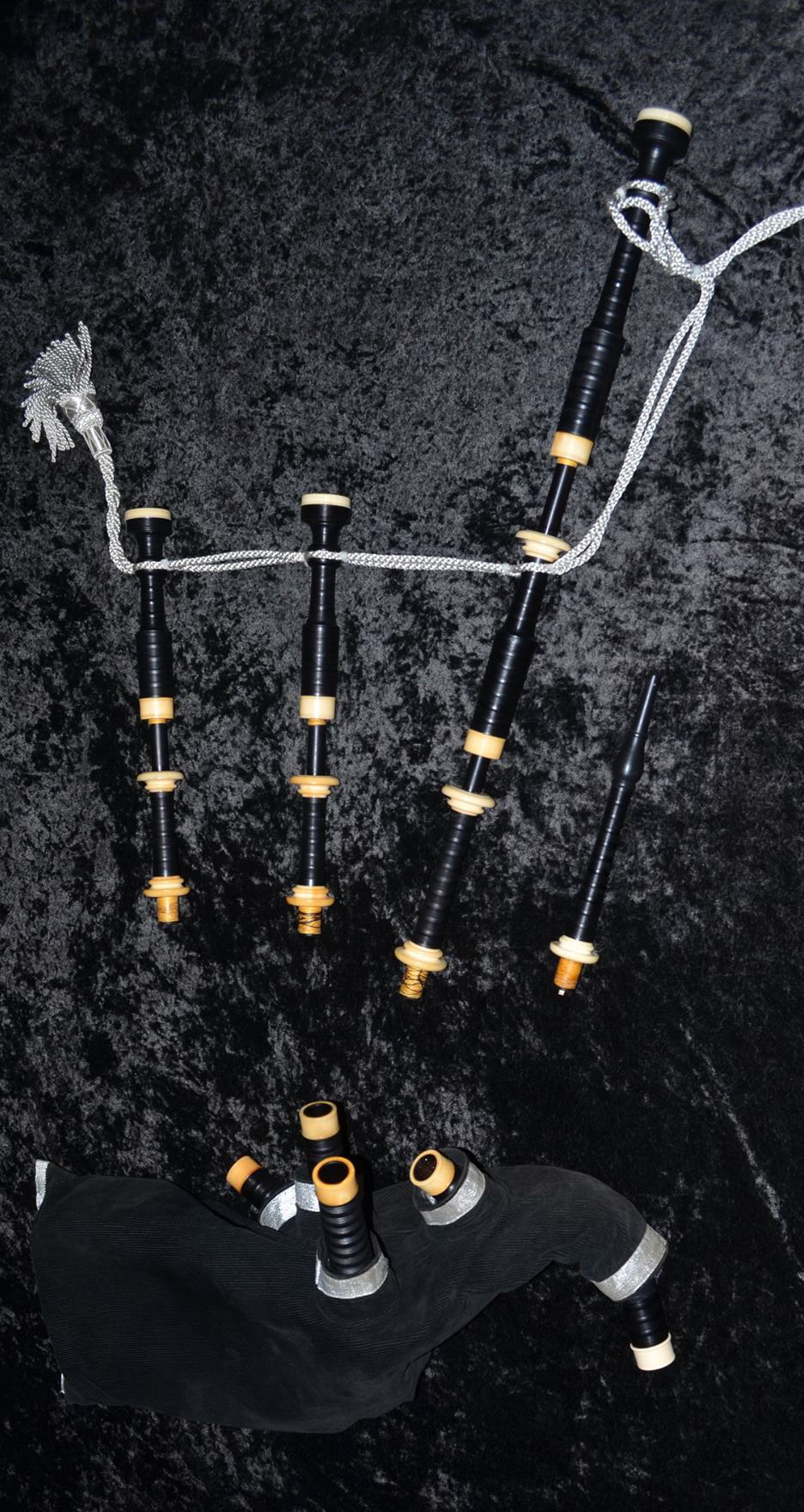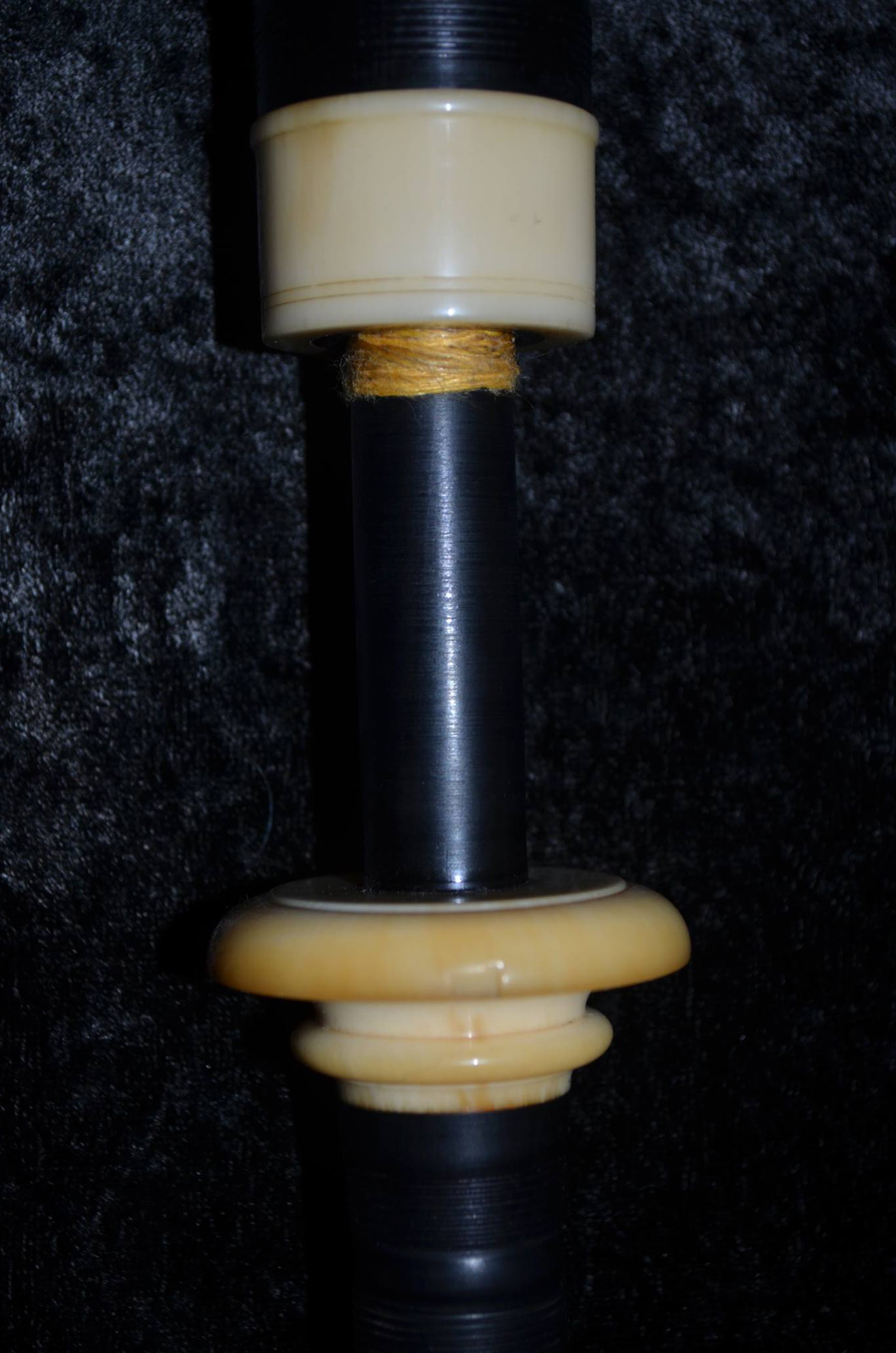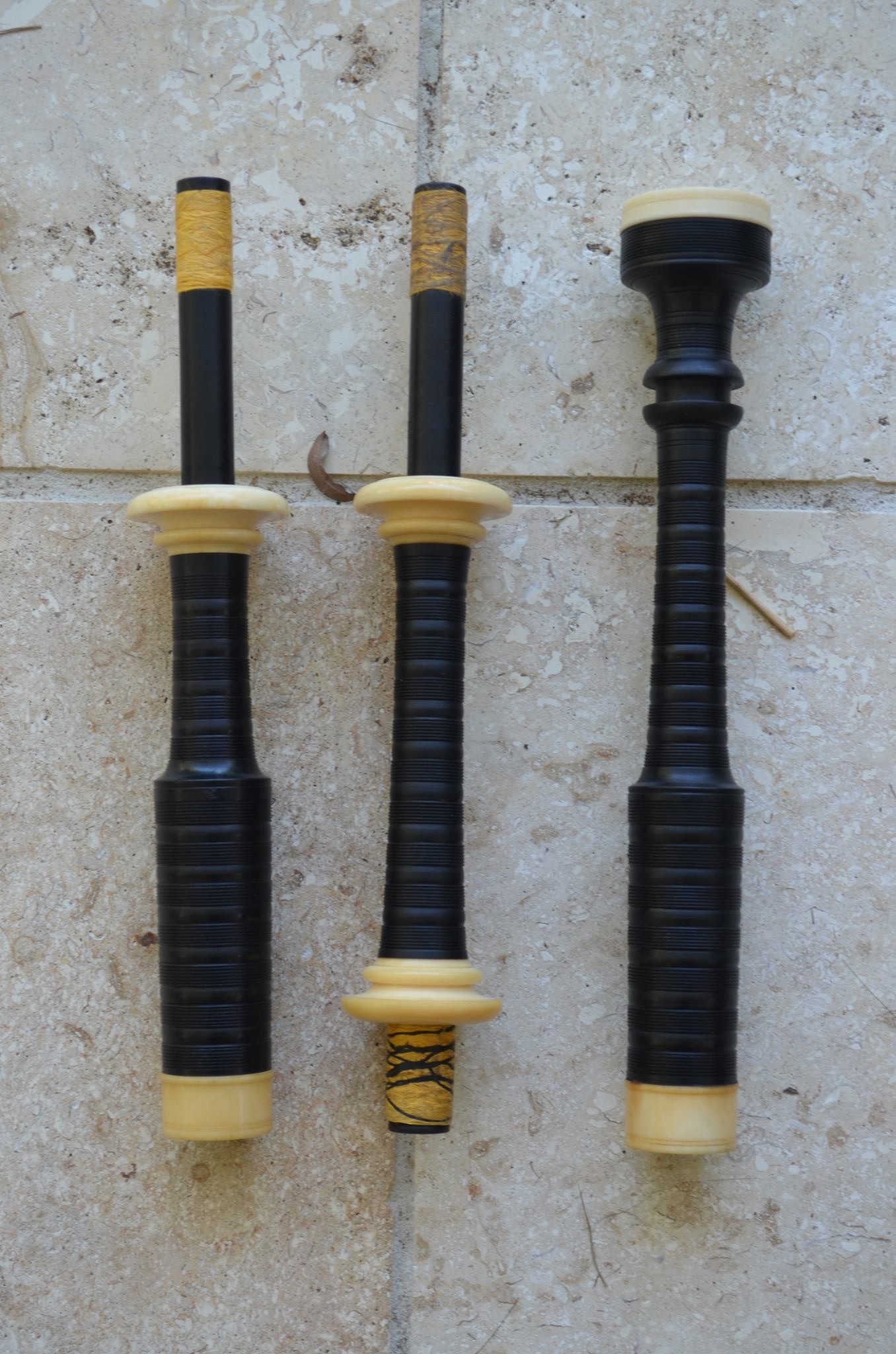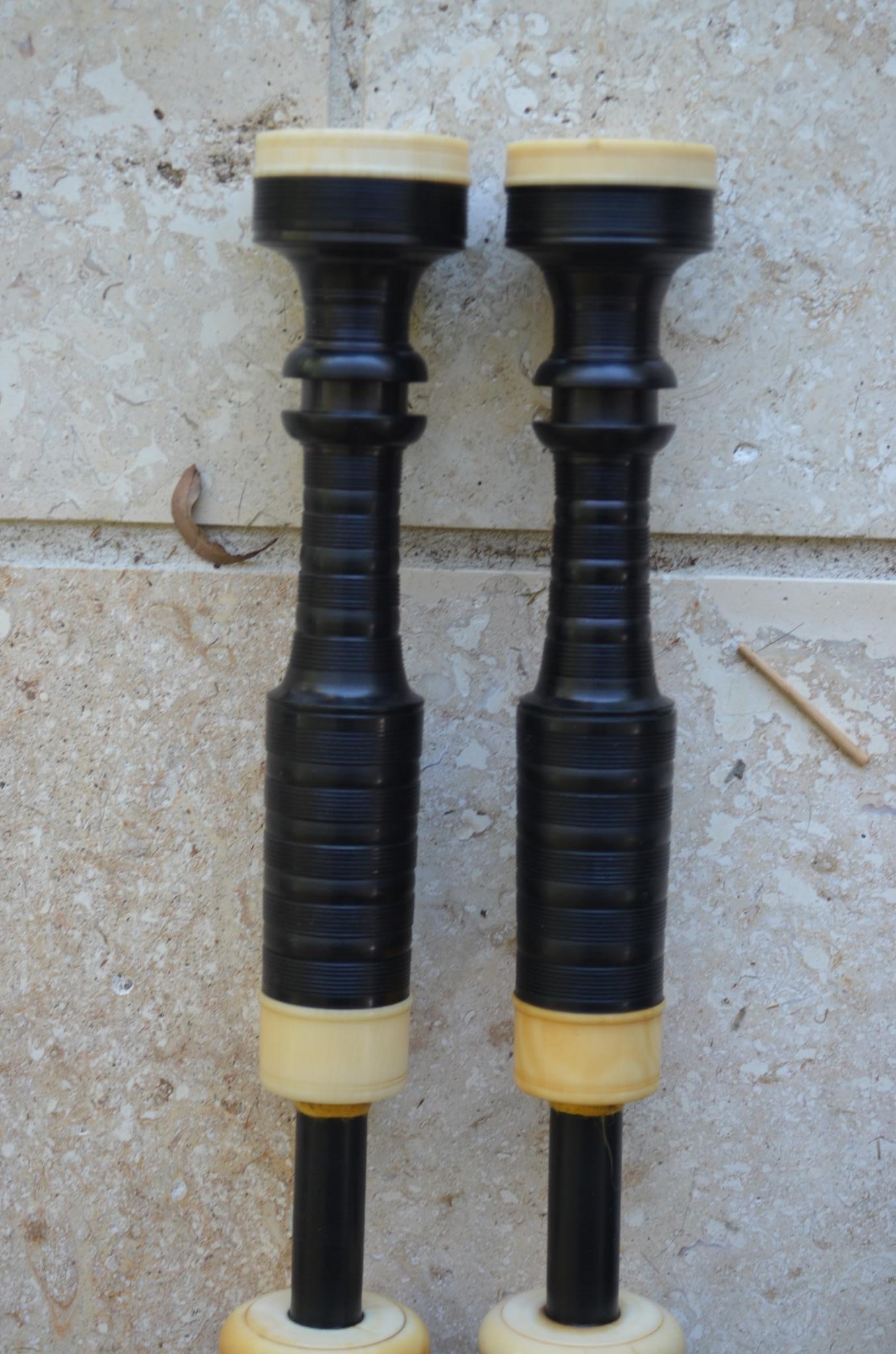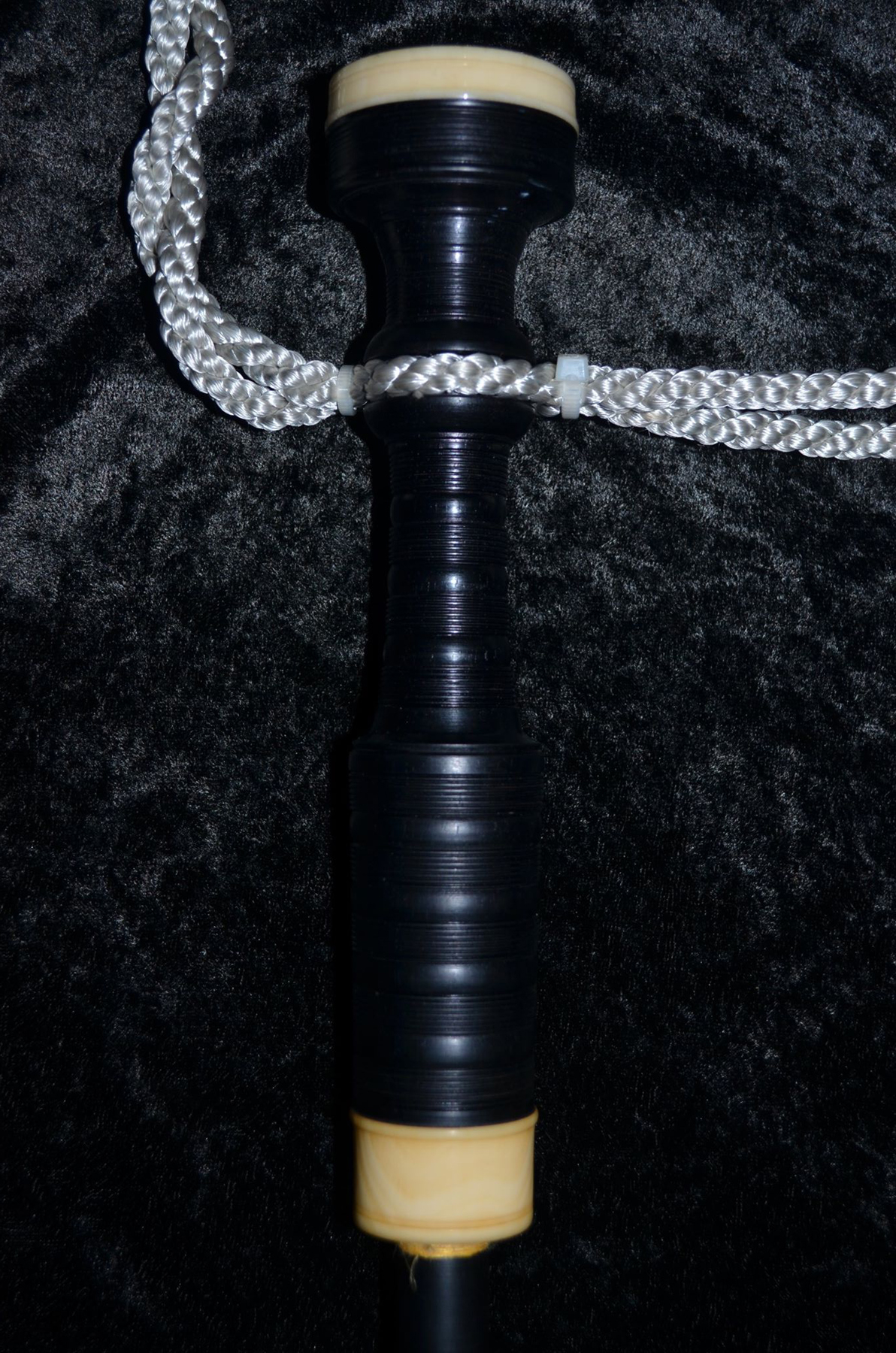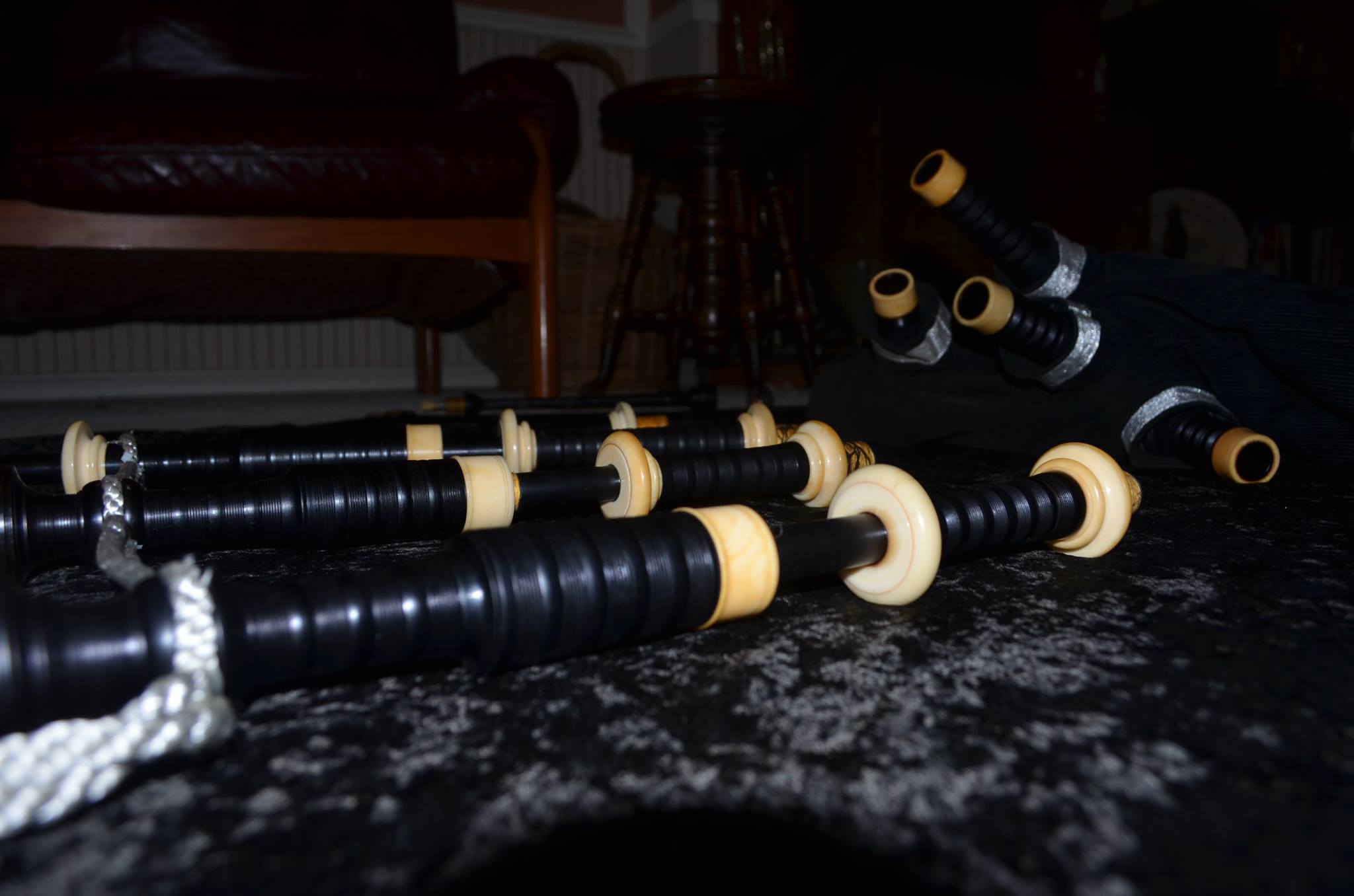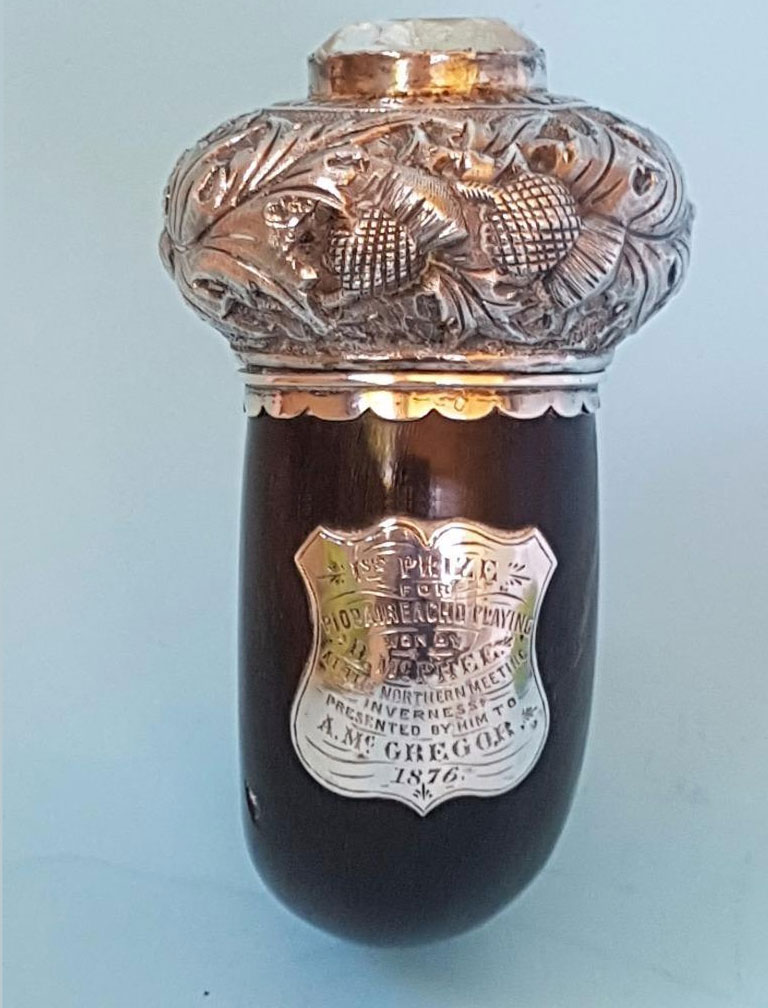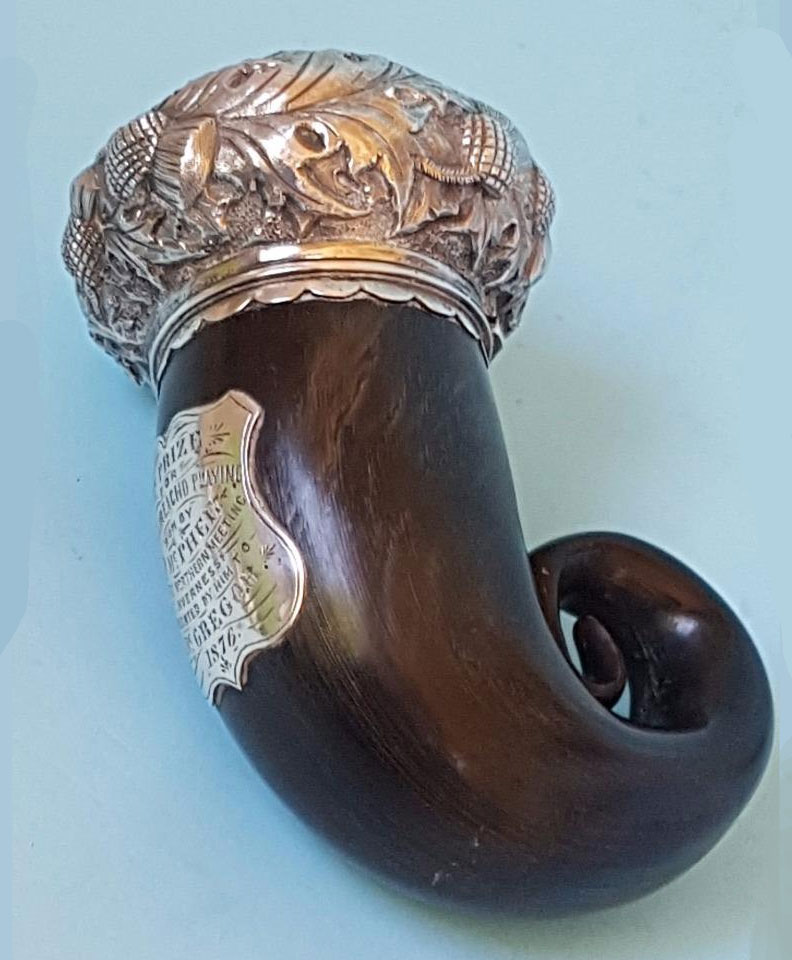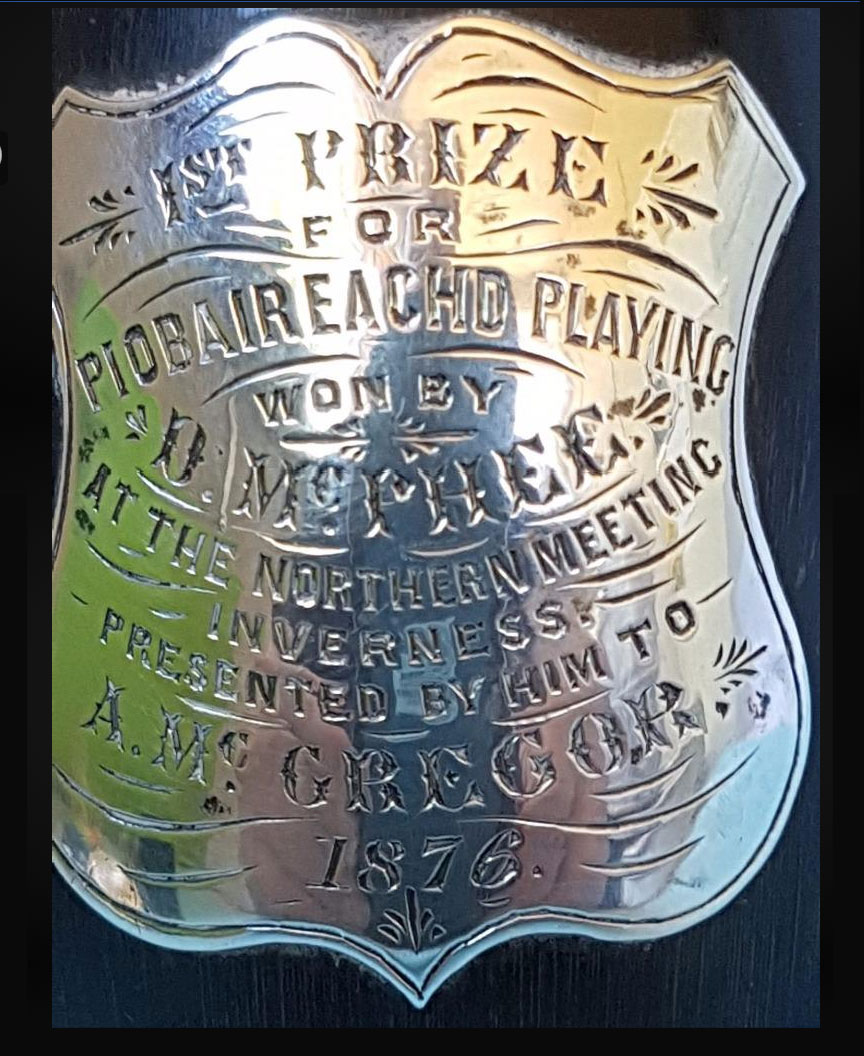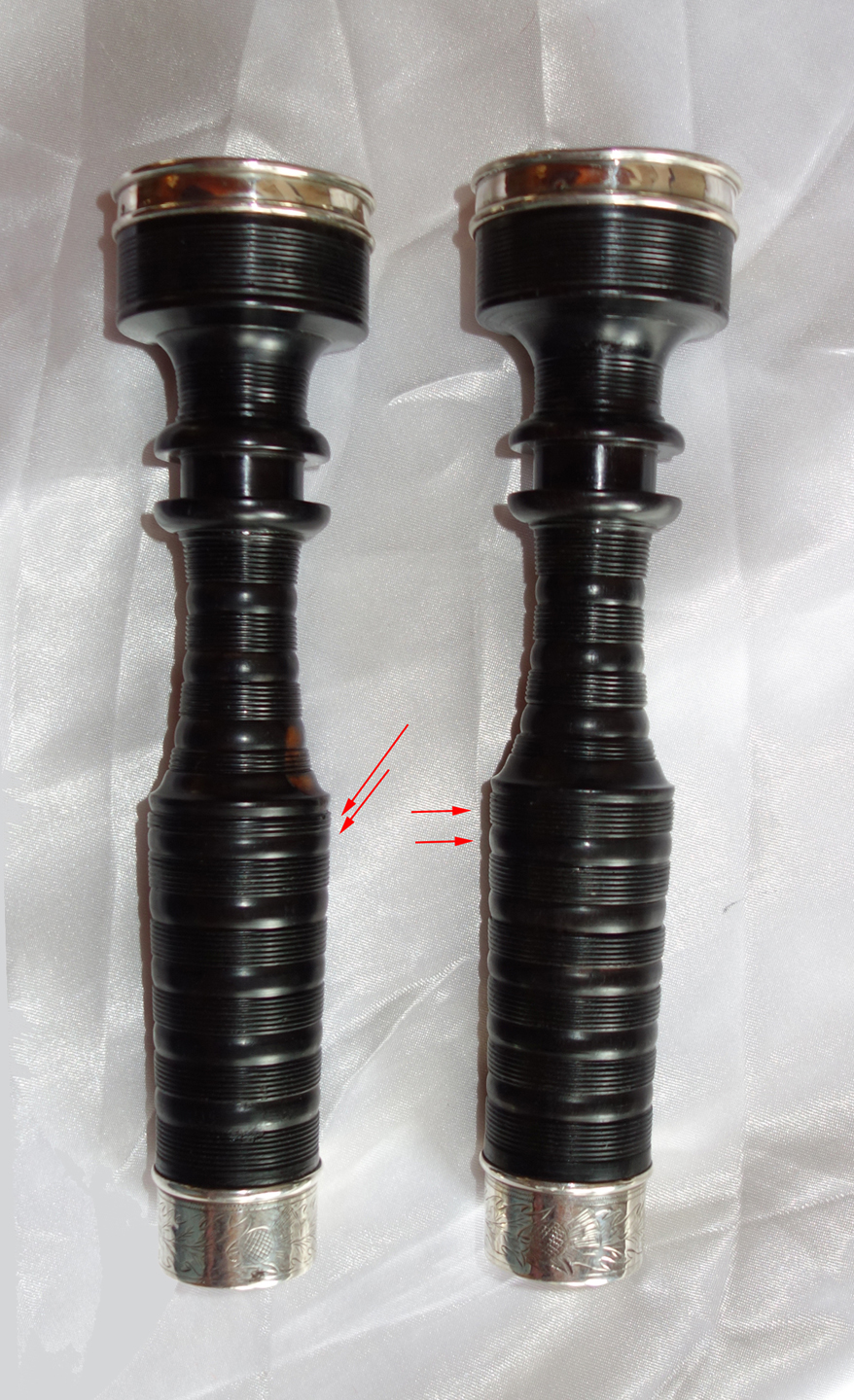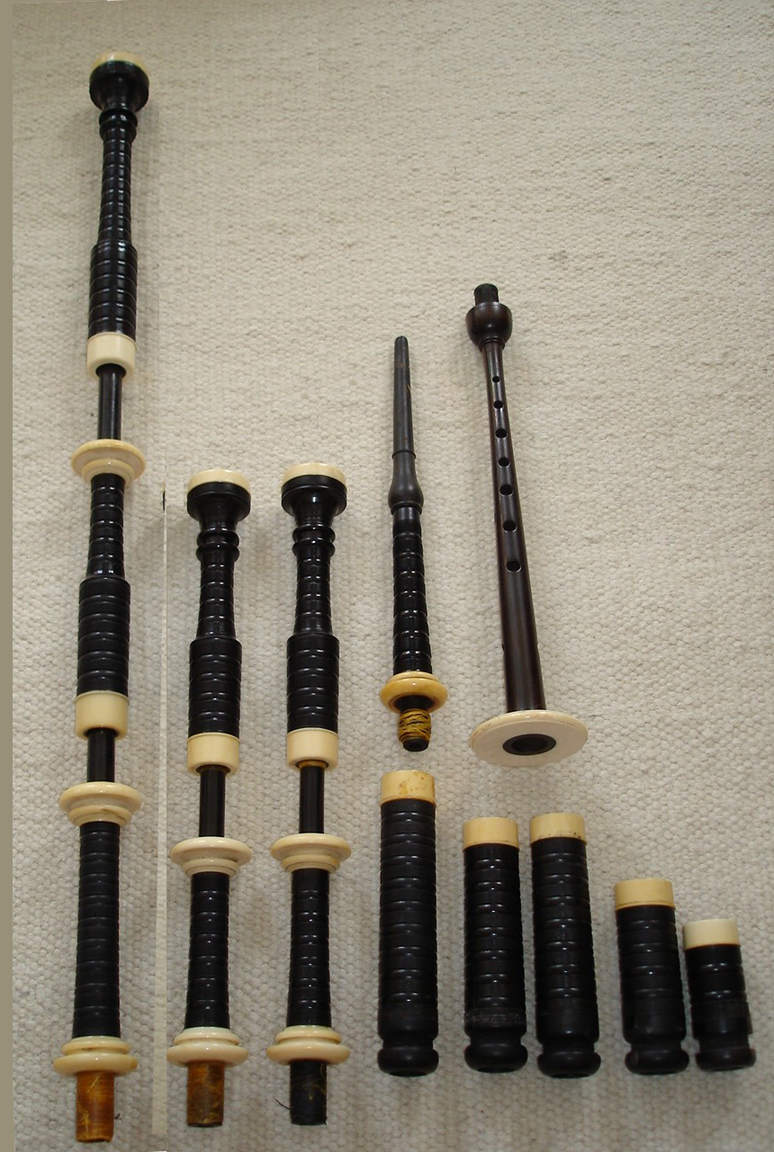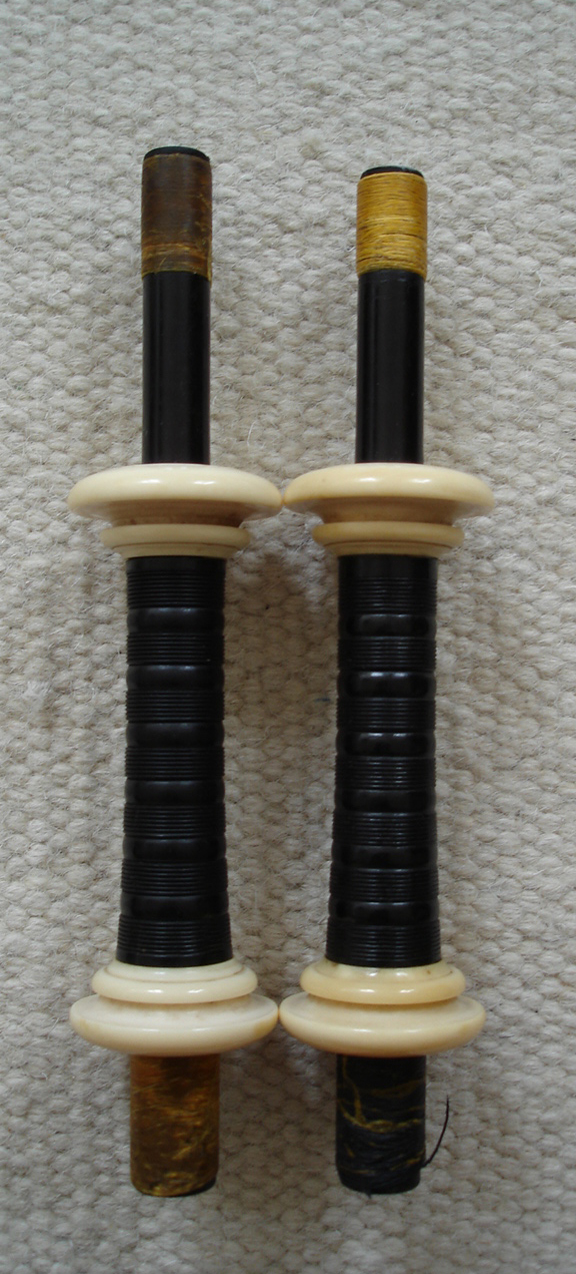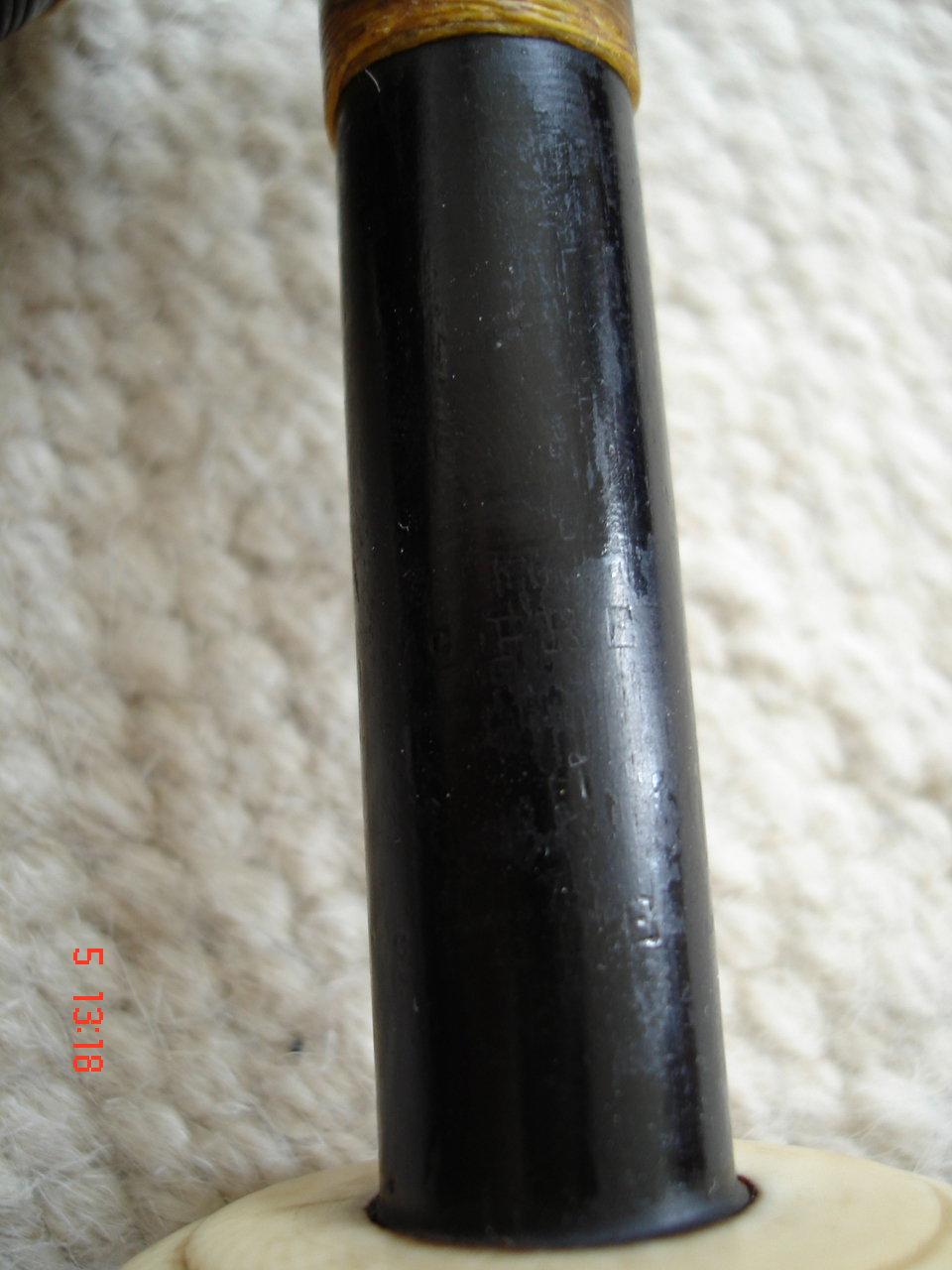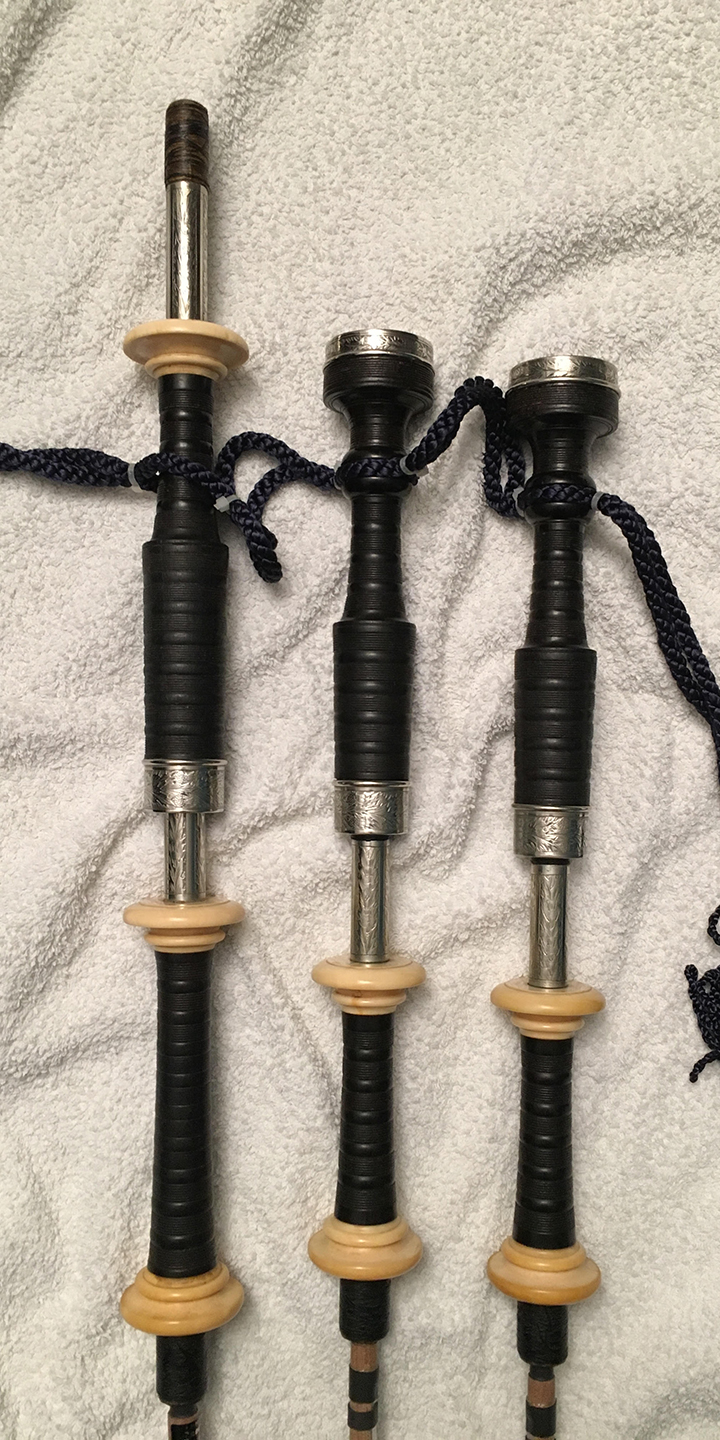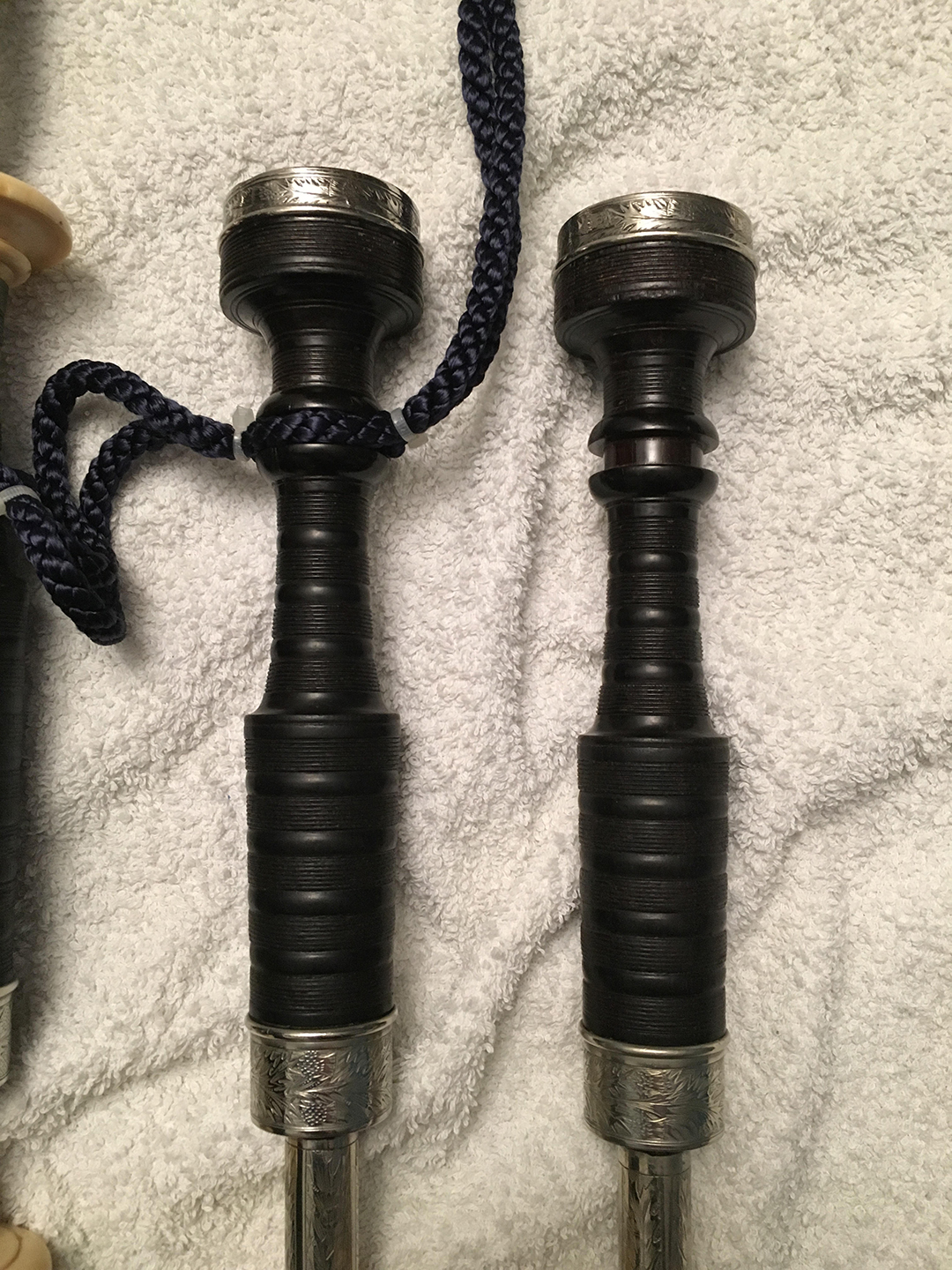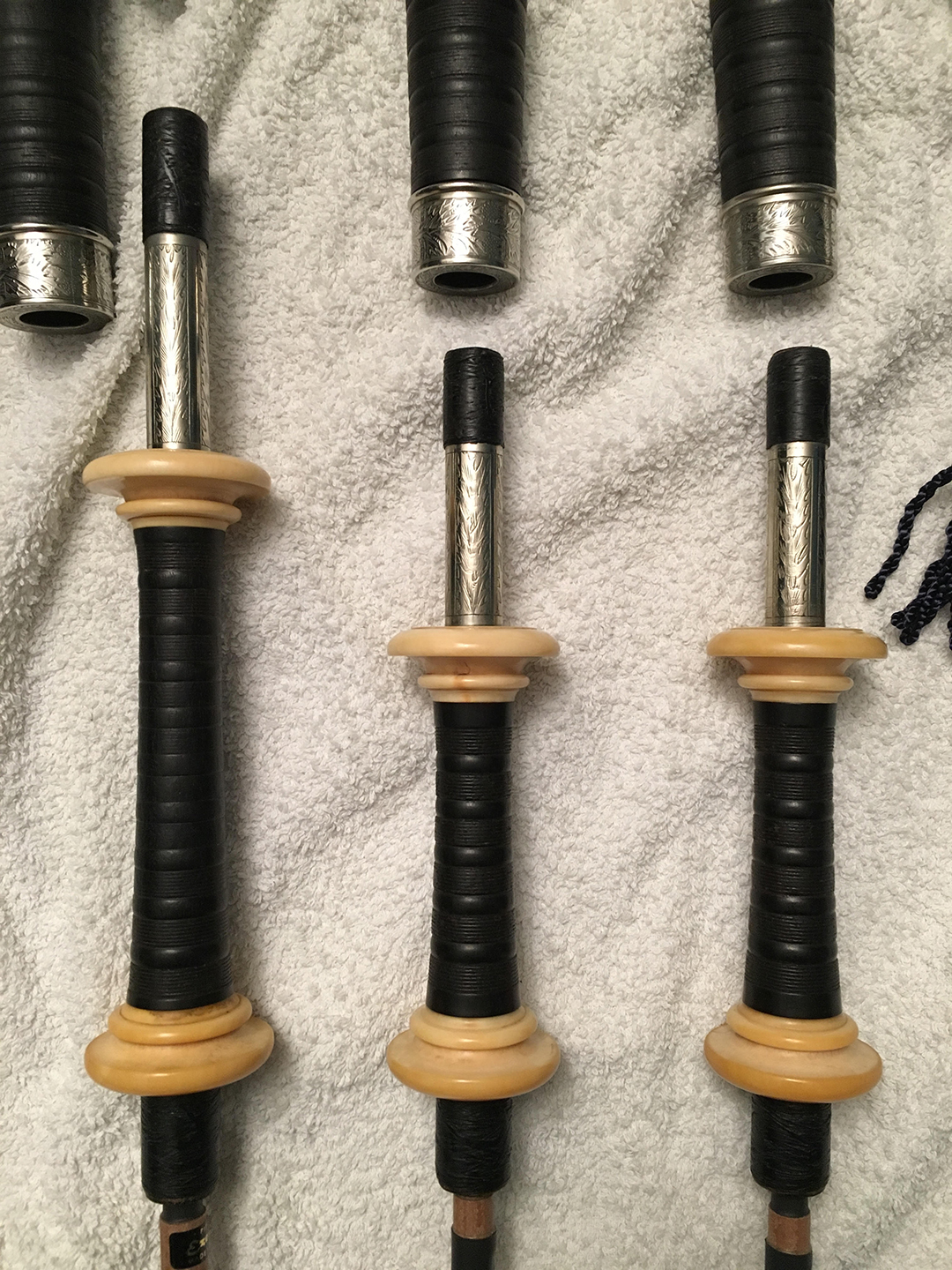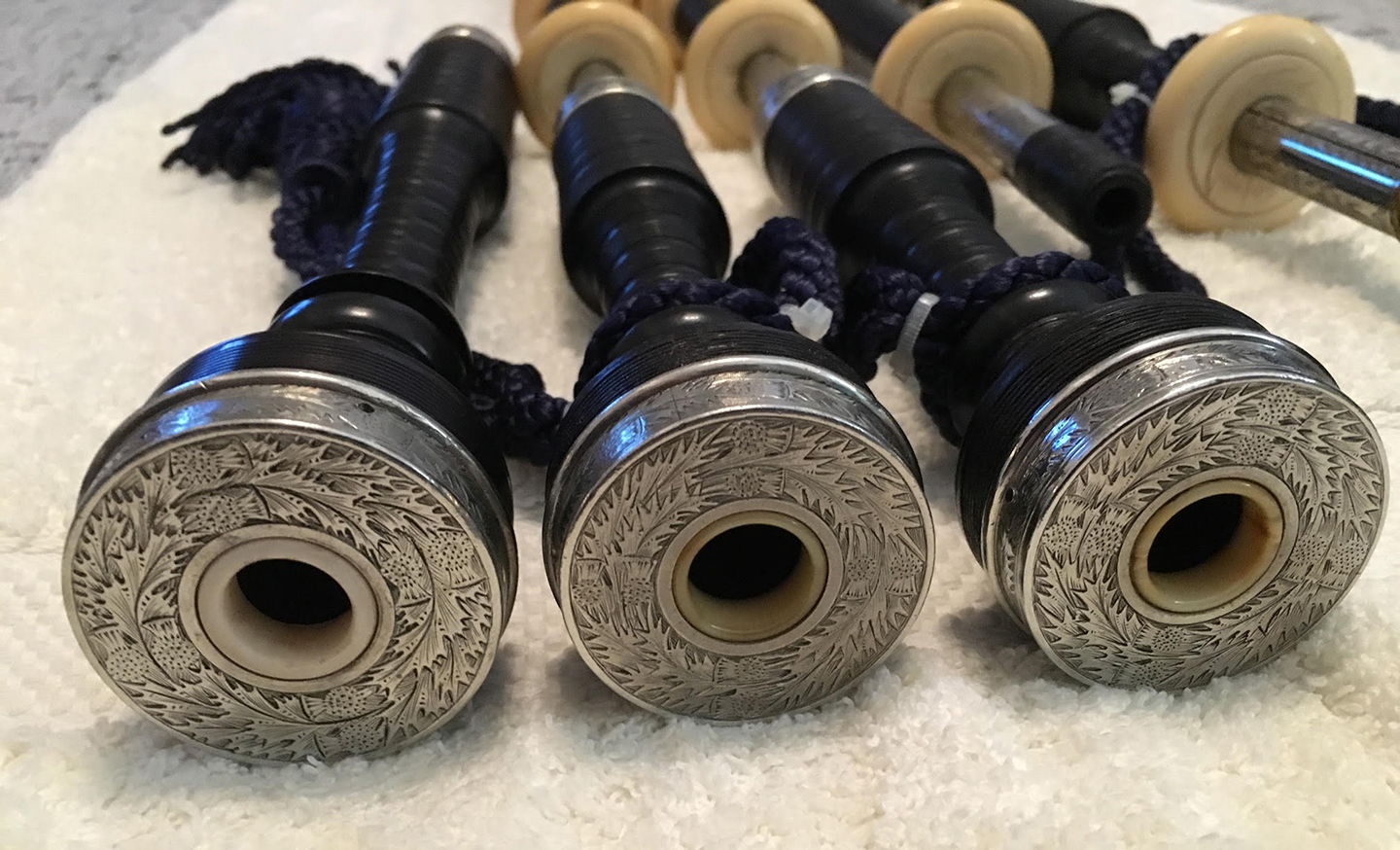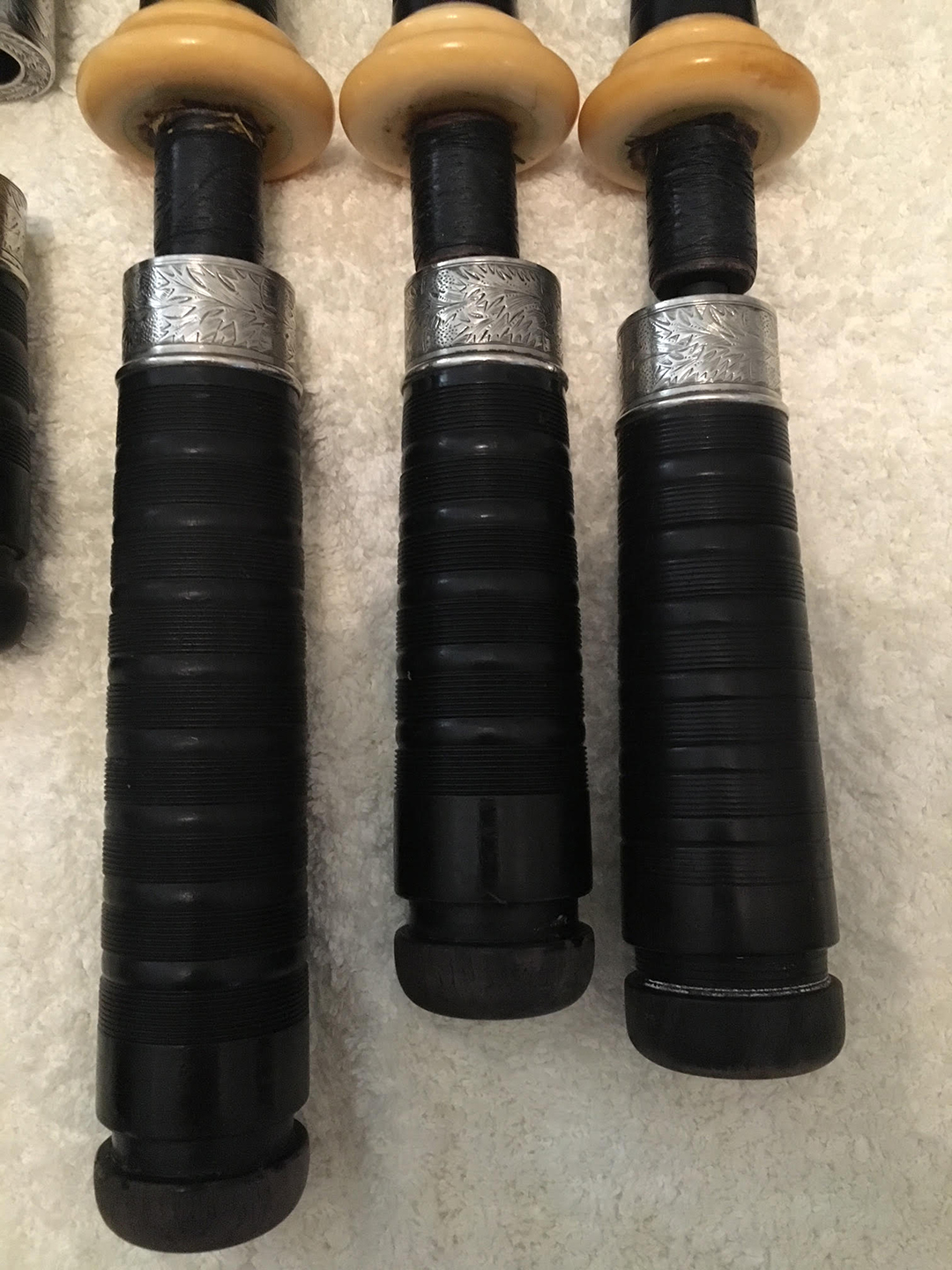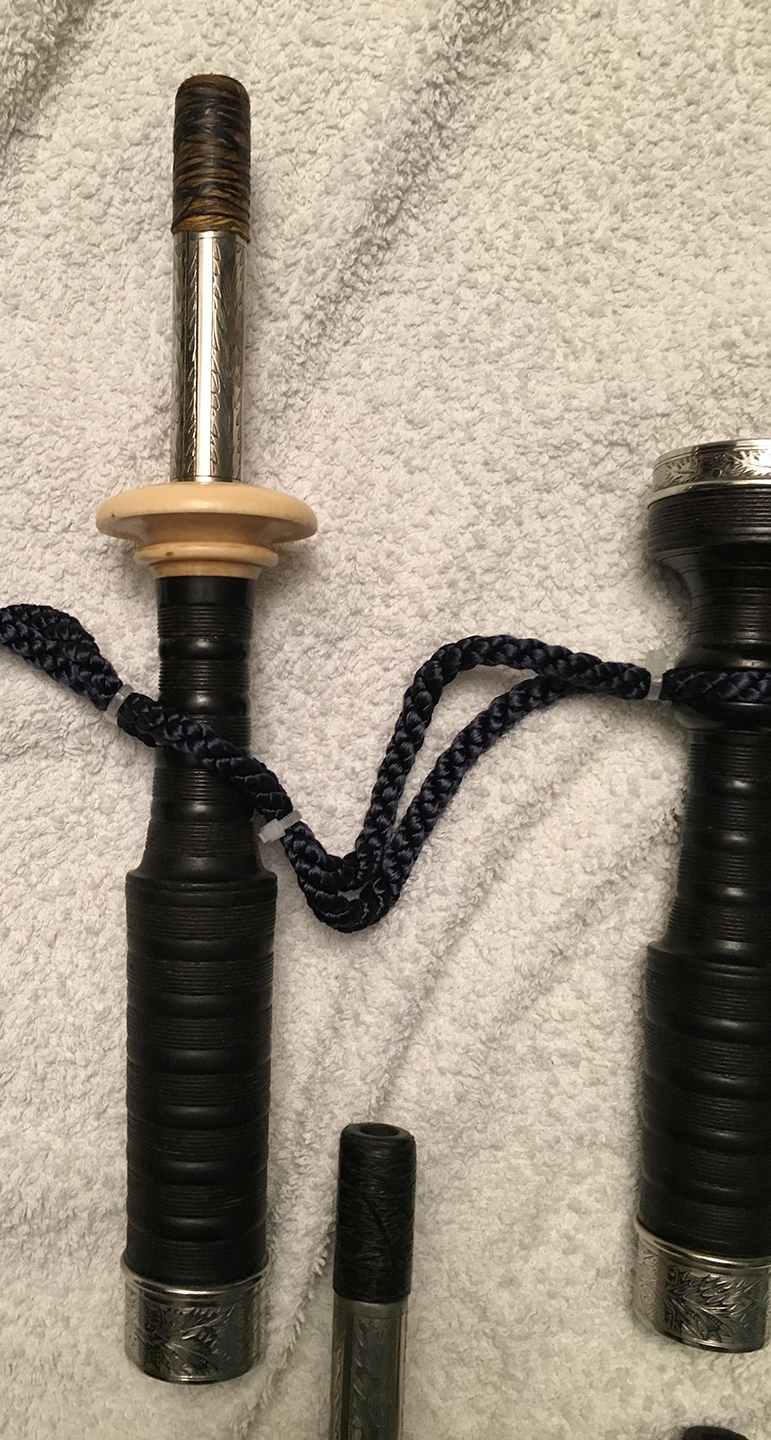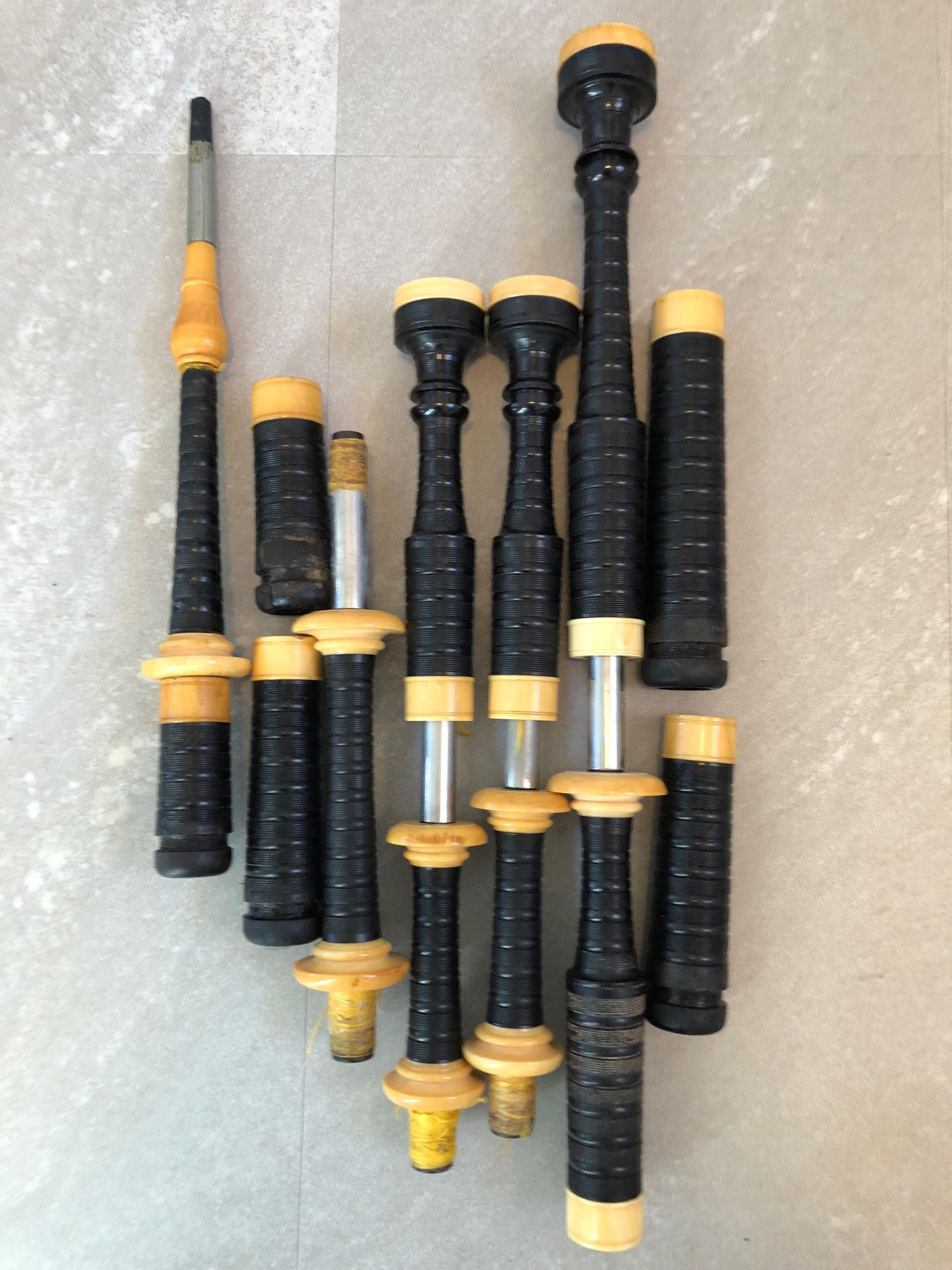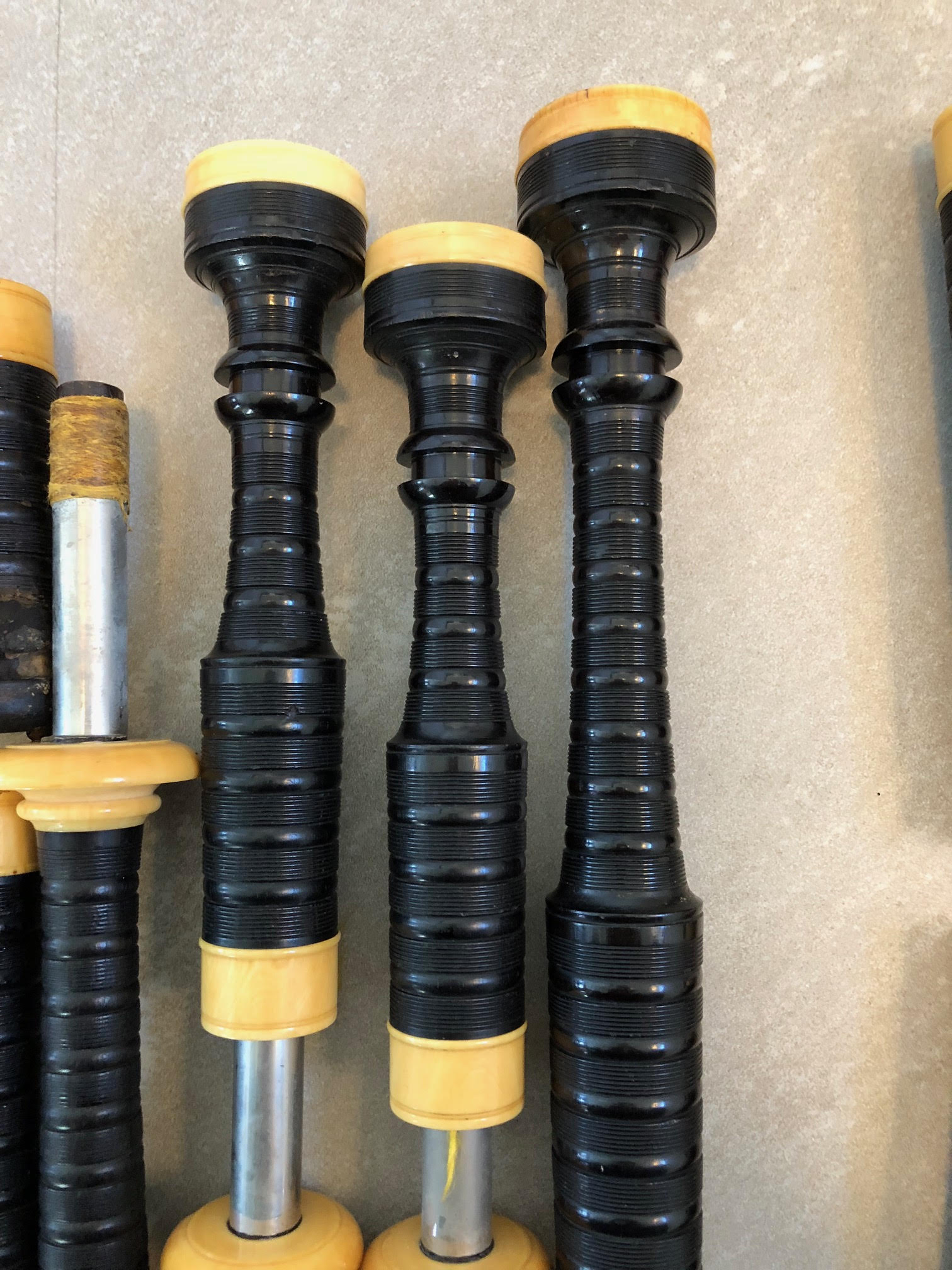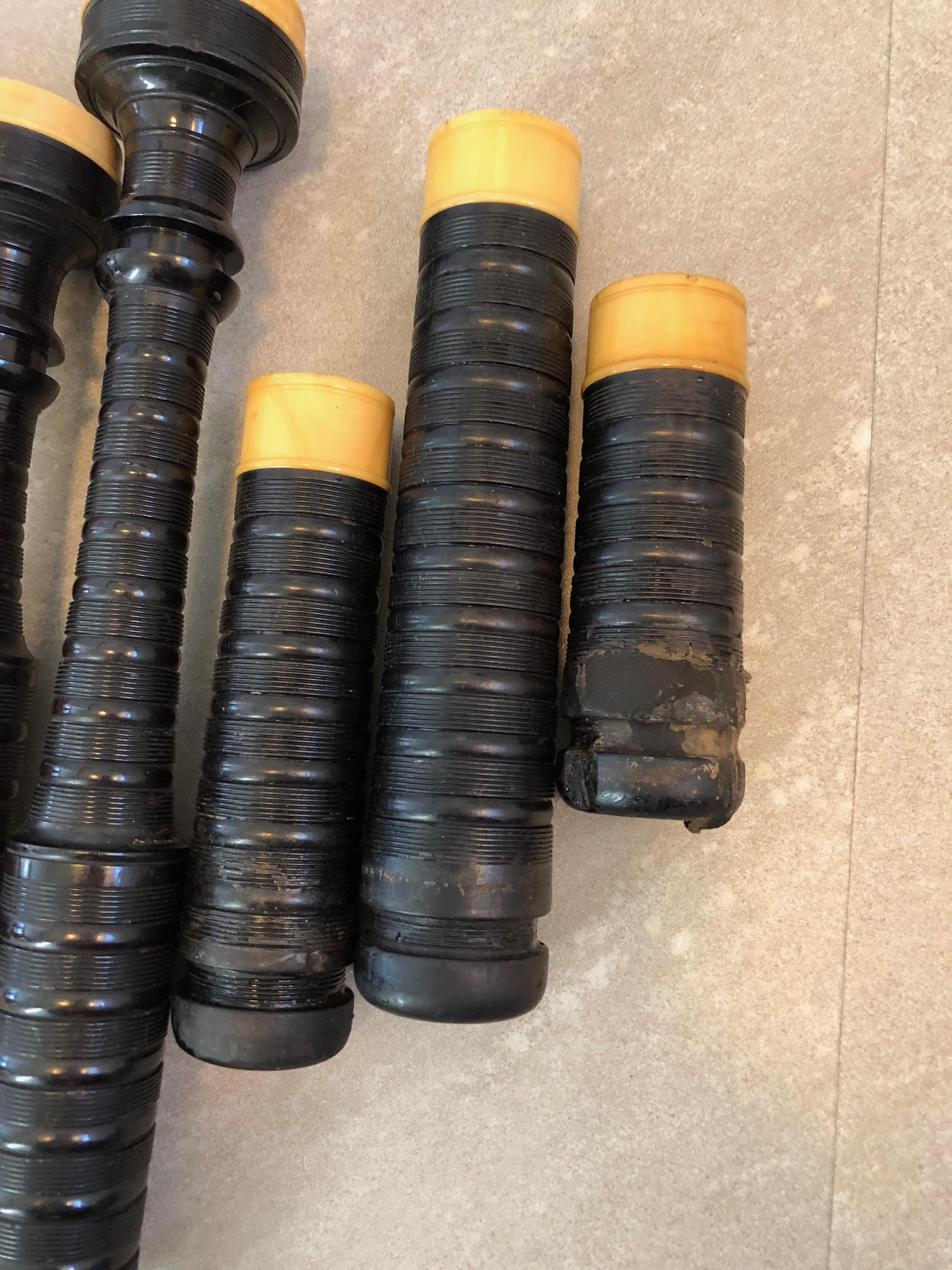Donald MacPhee was born in 1841 and was an outstanding
piper and bagpipe maker. He first appears as a bagpipe maker in 1872.
He operated a successful business from 17 Royal Arcade (Glasgow) until his death in 1880. According to Jeanne Campbell, Donald died of "general paralysis of the insane" over a duration of about one year.
Donald must have been a very special person to be a top competing piper in 1876, hospitalized in 1879 at the age of 37, and dead at age 38. He probably lifted pints regularly with Robert MacKinnon and Alexander MacArthur, as they all operated bagpipe businesses within steps of one another. MacArthur actually moved into the residential address (26 Thistle Street) vacated by MacPhee in 1872. One can only imagine what Peter Henderson must have felt taking over MacPhee's shop in 1880. These images are of MacPhee bagpipes. The sound is said to be full, rich, and majestic not at all unlike the sound of early Peter Henderson bagpipes.
piper and bagpipe maker. He first appears as a bagpipe maker in 1872.
He operated a successful business from 17 Royal Arcade (Glasgow) until his death in 1880. According to Jeanne Campbell, Donald died of "general paralysis of the insane" over a duration of about one year.
Donald must have been a very special person to be a top competing piper in 1876, hospitalized in 1879 at the age of 37, and dead at age 38. He probably lifted pints regularly with Robert MacKinnon and Alexander MacArthur, as they all operated bagpipe businesses within steps of one another. MacArthur actually moved into the residential address (26 Thistle Street) vacated by MacPhee in 1872. One can only imagine what Peter Henderson must have felt taking over MacPhee's shop in 1880. These images are of MacPhee bagpipes. The sound is said to be full, rich, and majestic not at all unlike the sound of early Peter Henderson bagpipes.
I received this note and pictures for inclusion in this museum. "Very rare, fully restored Donald MacPhee (c. 1870's) bagpipes in ebony and fully mounted with ivory. Beautiful, full tone but very well refined... Gorgeous sound!
The person whom I received this bagpipe from, told me shortly before she died that the bagpipe was bought in 1876 from Donald MacPhee's shop on 17 Royal Arcade by her great grandfather for her grandfather for his 21st birthday, quite a beautiful story really. She said there was a makers mark on the pipes on one of the tuning pins, but it was feint and disappeared over time and was completely gone by the time I received them."
The person whom I received this bagpipe from, told me shortly before she died that the bagpipe was bought in 1876 from Donald MacPhee's shop on 17 Royal Arcade by her great grandfather for her grandfather for his 21st birthday, quite a beautiful story really. She said there was a makers mark on the pipes on one of the tuning pins, but it was feint and disappeared over time and was completely gone by the time I received them."
Some of the old makes of bagpipes are very difficult to identify as makers didn't necessarily follow the same pattern time-after-time. I try to associate specific profiles or details before venturing to offer an opinion. Whenever I see a bagpipe that is said to be early Peter Henderson, but it doesn't quite line up with Peter, I wonder if it might have be a Donald MacPhee bagpipe.
The chanter at the far right is stamped D. McPhee Glasgow. It is believed to be reliable authentication of the bagpipe in this instance.
One thing I have noticed about Donald MacPhee bagpipes is that we wasn't all that concerned about how his beading and combing lined up. It seems he would make small "adjustments" to compensate for things. He also seemed to put a small flat and scribe lines at the top of his tuning chambers. See the examples below.
Whenever I'm asked to identify the maker of an old bagpipe, I'm really more focused on profiles and proportions than on detail. People usually start by sending me close-up pictures of projecting mounts or beading and combing, etc. I have to ask them to step back and send me pictures like you'll see here. I recently received pictures of the bagpipe below with the thought that it might be Henderson or it might be Donald MacPhee. The first thing that struck me was the length of the tuning chambers. As I dove deeper into the bagpipe, I found six beads on the bass tuning chambers, four beads on the tenor tuning chambers and nine beads on the bass long joint. Although the number of beads is not a reliable means of identifying the maker, it can be an important clue. Together with other factors, I am confident that the bagpipe below was indeed made by Donald MacPhee.
This last bagpipe (below) just surfaced and conforms to what we know of Donald MacPhee.
Donald MacPhee
